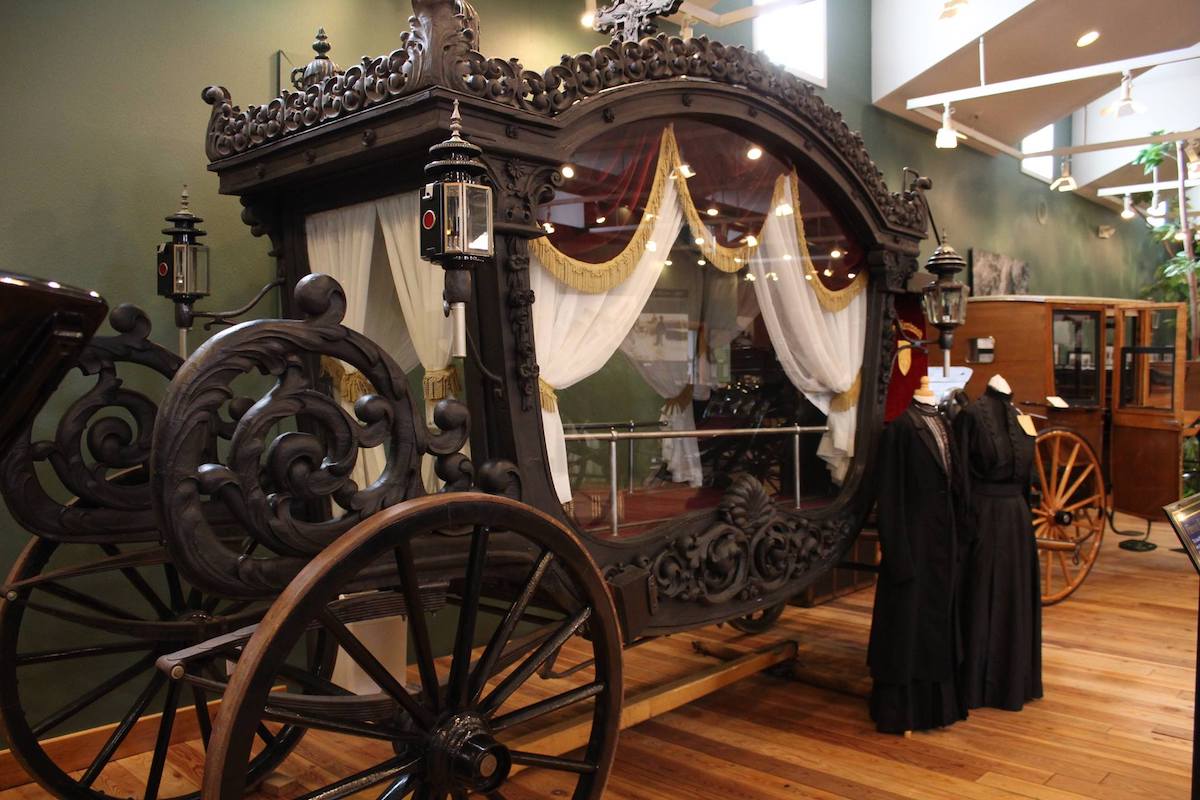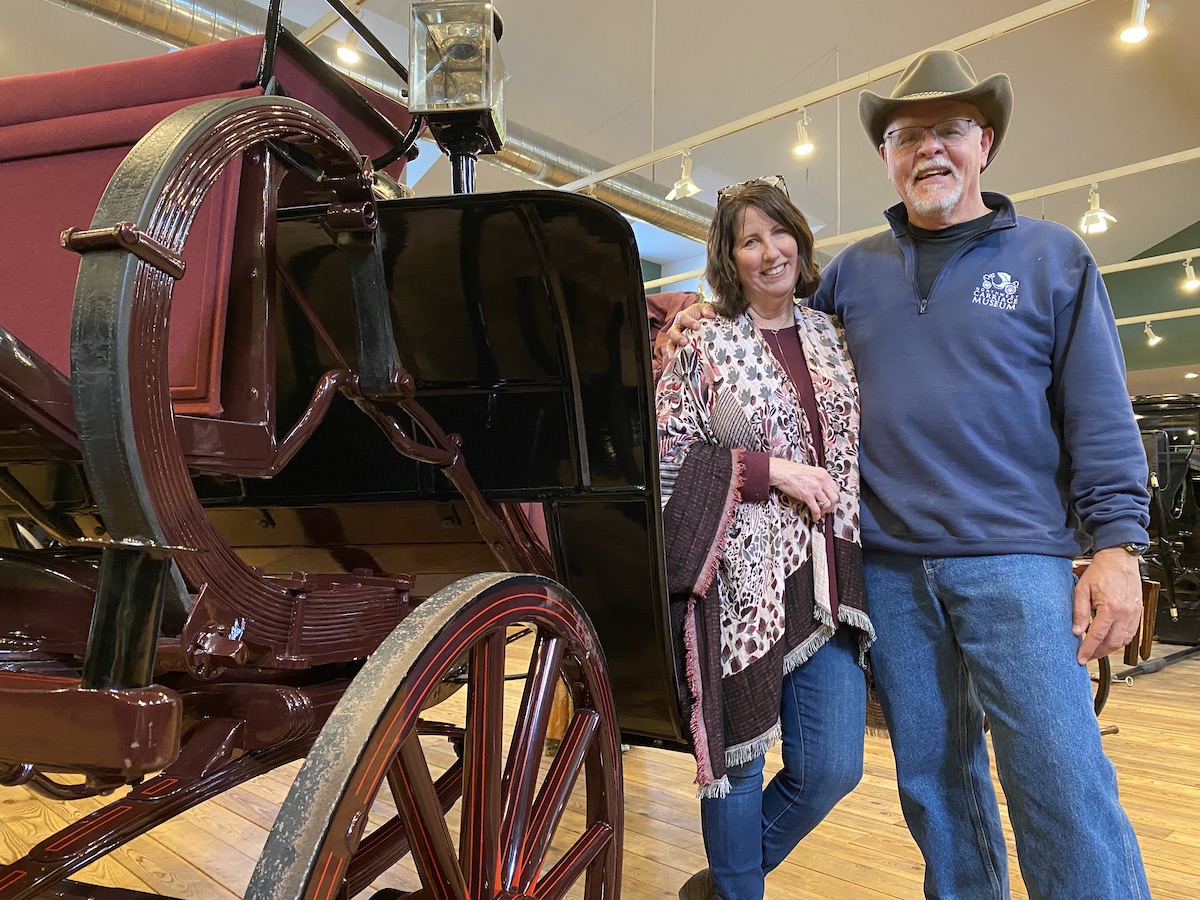
The Northwest Carriage Museum Celebrates 20 Years of Transporting Visitors Back in Time
by Anne Erickson
Their bodies gleam. Plush leather interiors promise comfort. Some have beefy wheels and hubs for all terrain travel and heavy work. Others are sleek, designed for cruising urban streets. Horsepower tops out at 6.
The Northwest Carriage Museum in Raymond, Washington isn’t just a display of antique vehicles – it’s an insight into how we currently get around. The means may have changed, but the need remains the same. After all, where do you think the word ‘car’ came from?

This small town on the estuary where Willapa River becomes Willapa Bay is an unlikely location for one of the best collections of antique carriages in the world. But it makes sense after meeting the museum’s Executive Director Laurie Bowman and curator Jerry Bowman. The couple fell in love with Raymond while exploring the west in their modern-day carriage (a travel trailer) and decided to settle in the small town. Jerry, who retired at 50 from a career in data processing, got involved with maintaining the non-profit museum's original collection of 21 horse-drawn carriages. He does much of the restoration and conservation work himself, at his home about 5 minutes from the museum. “It’s a passion,” he confessed.
The carriage collection has since grown to 61 and includes everything from ornate hearses, to a nimble, two wheeled Hansom cab, the 1800’s equivalent of an Uber. Each carriage is a trip back in time and at the same time, a connection to its modern-day equivalent.

The ‘celebrity carriages’ often get noted – there’s one that appeared in the classic “Gone with the Wind” and an 1888 stagecoach that carried Humphrey Bogart and Errol Flynn in the movie “Virginia City”. But the ones that did less glamorous jobs are just as fascinating. A horse drawn tanker that carried kerosene in a shiny, tiny tank. A chuckwagon outfitted with a coffee bean grinder and an outdoor sink that would make any car-camper swoon. The Mitchell Farm Wagon with massive wheels that moved intrepid pioneers westward. Jerry points out that canvas covered wagons drawn by horses are something of a myth. Usually hardier oxen pulled the load, and humans walked alongside, saving precious vehicle space for essentials. The oldest and most valuable piece in the collection (Jerry declined to elaborate an exact figure) is an 1840 Road Coach from London. The big black beast was pulled by 6 horses and powerfully built, designed to deliver goods long distances through all conditions, night or day. There’s even a long brass horn in a scabbard the guard would pull out and blow to announce his arrival. Road coaches were eventually replaced by trains. Every single one of the vehicles here makes a person wonder what roads they traveled, and who traveled in them.

“I wish they could all talk,” said Jerry.
Jerry’s wealth of knowledge and love of history means he does a pretty good job of speaking for them. He’ll gladly give a personalized tour if he happens to be in the museum. But it’s also a perfect place to guide yourself through – antiques, authentic accessories (yes, there were even manufacturer options for vehicles back then!) and well-crafted interpretive displays add context, and a hands-on room gives kids and grownups a chance to climb on board a carriage and try their hand at wheel building. The largest tourist attraction in Pacific County, The Northwest Carriage Museum opened in 2002 and is currently celebrating its 20th anniversary. It draws 10 to 12 thousand visitors a year from all over the world – the birthday poster displayed in the lobby has signatures from Hawaii, Tennesee, Finland. One signature sums it up, exclaiming “I love getting carried away!”

Northwest Carriage Museum hosts Jerry & Laurie Bowman.
It’s a world class museum in an unlikely spot, a well concealed gem. “It’s so much more than carriages,” said Laurie. “If you take the time to stop by you will be astounded.”
